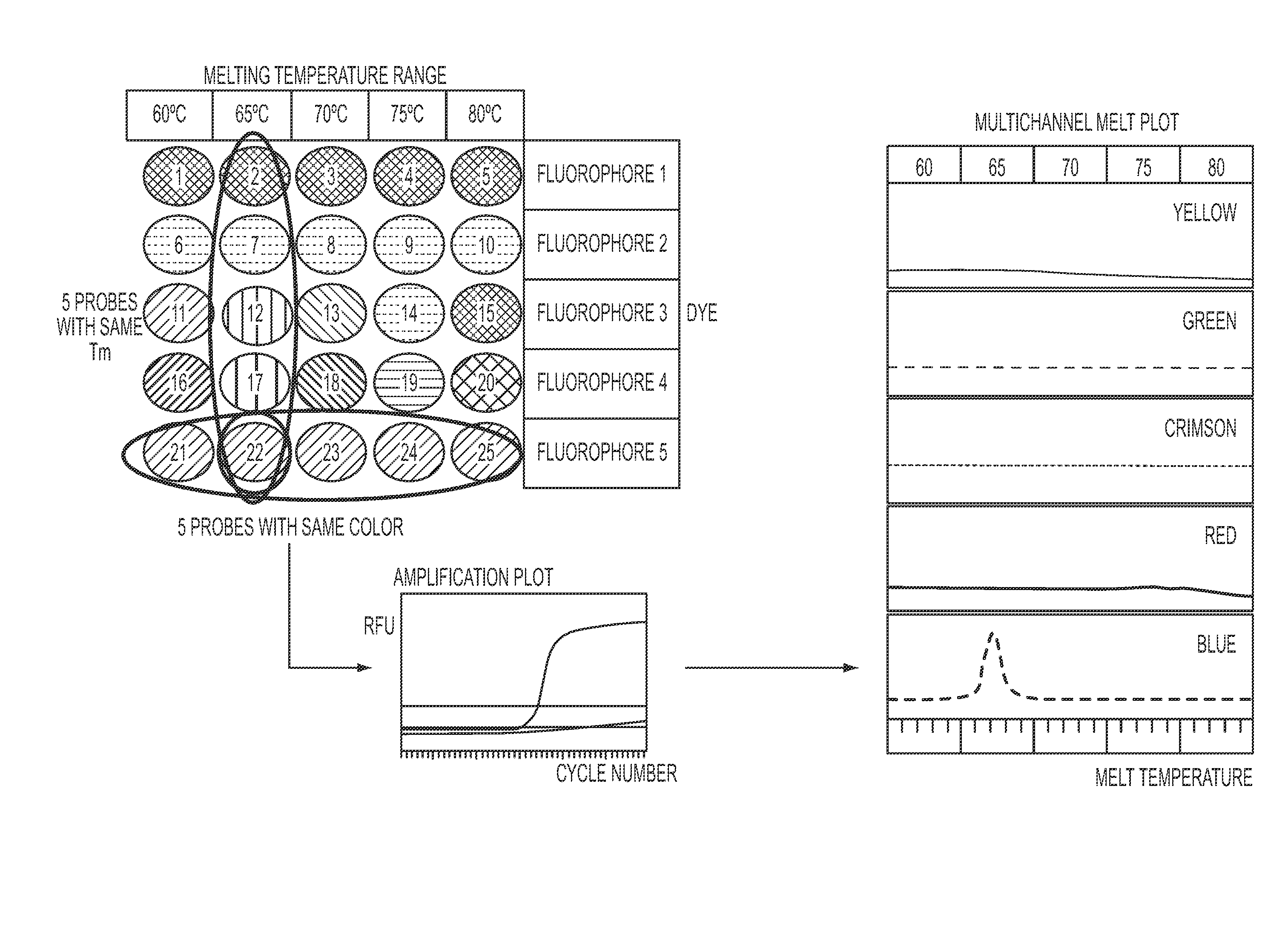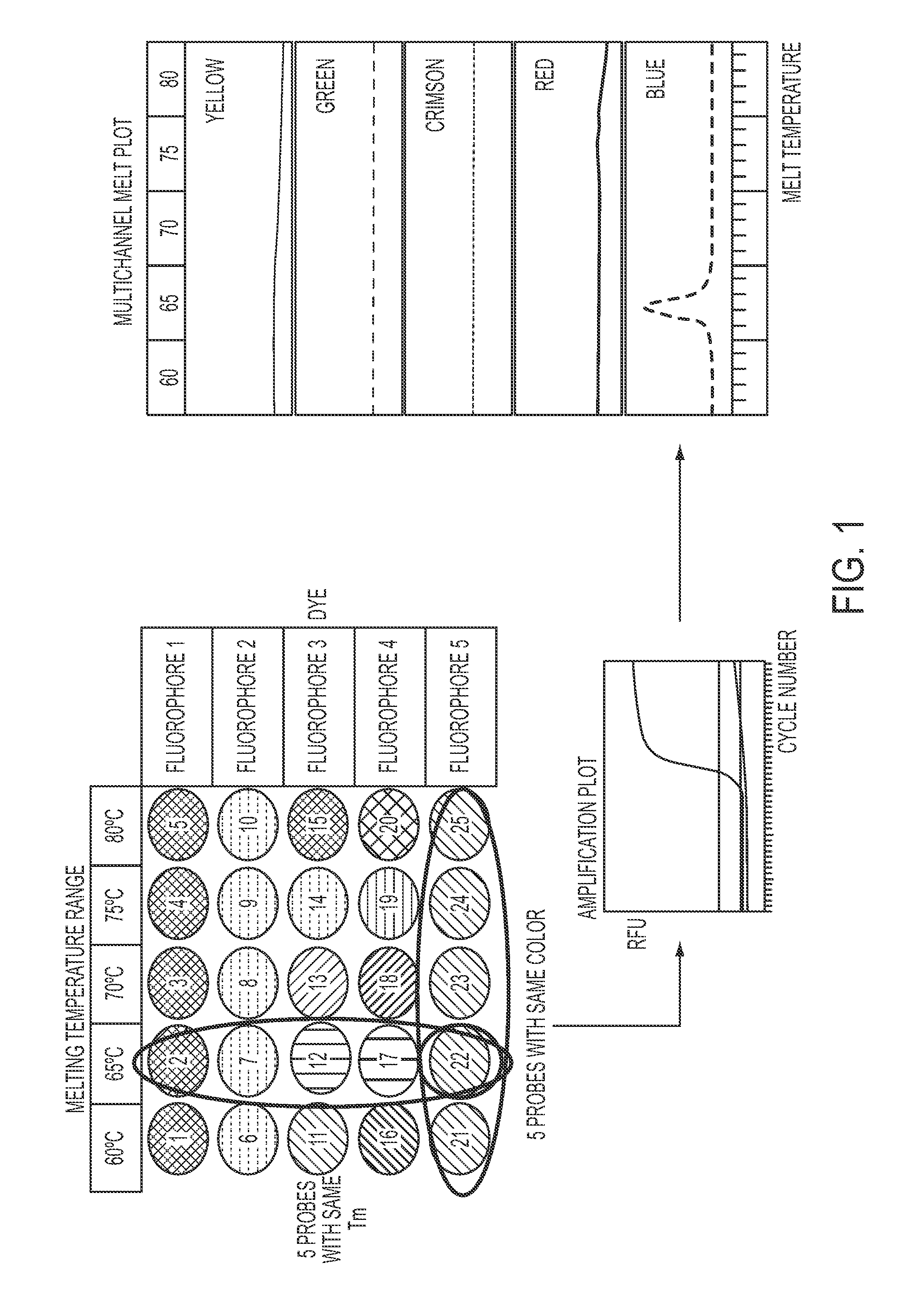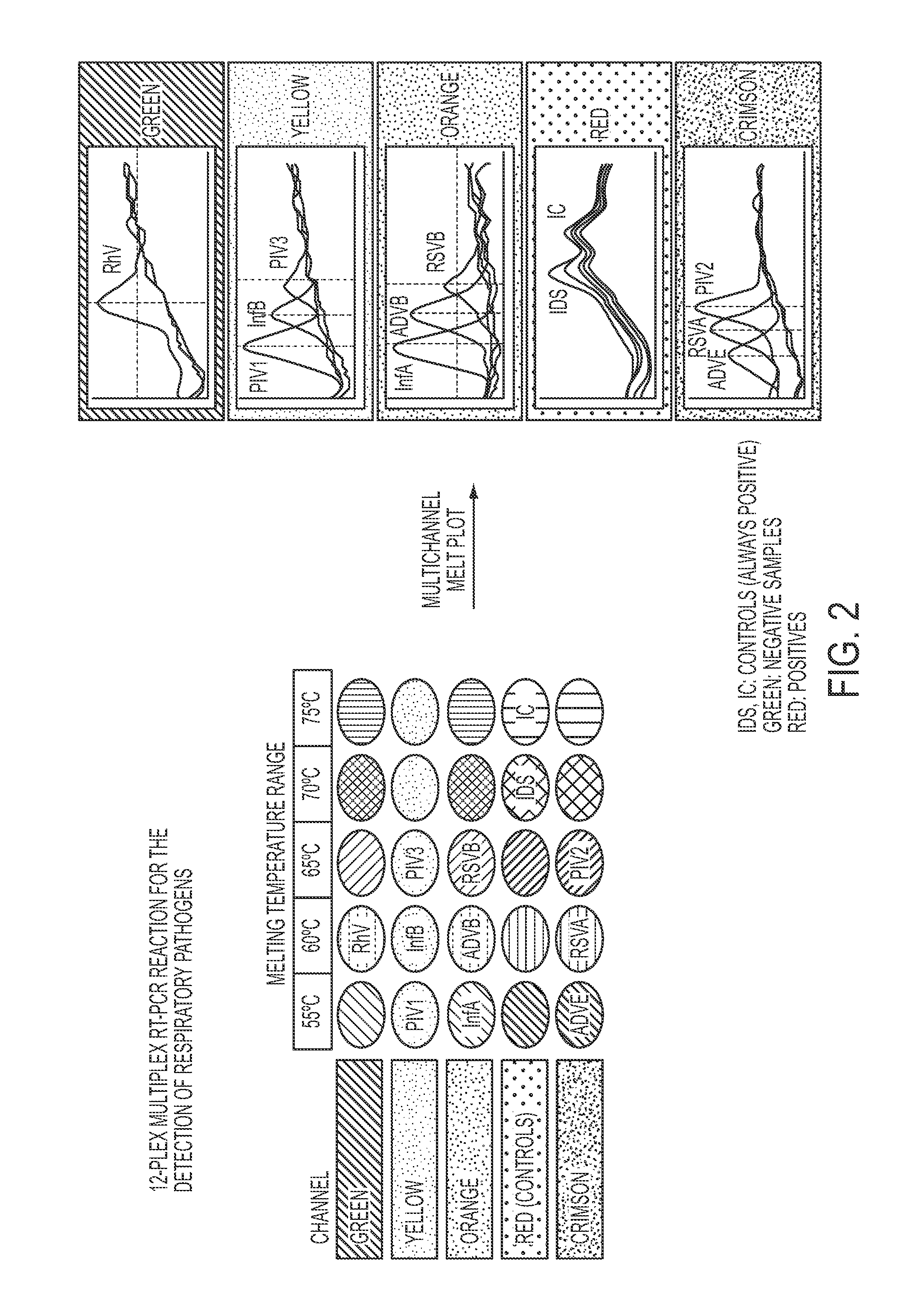Methods and compositions for sequence-specific purification and multiplex analysis of nucleic acids
a sequence-specific and multiplex analysis technology, applied in the field of sequence-specific purification and multiplex analysis of nucleic acids, can solve the problems of inherently error-prone target-specific amplification methods such as pcr, the relative amount of target nucleic acids relative to the total amount of nucleic acid purified is typically very low, and the method has limited utility
- Summary
- Abstract
- Description
- Claims
- Application Information
AI Technical Summary
Benefits of technology
Problems solved by technology
Method used
Image
Examples
examples
[0158]In this experiment the feasibility of the workflow shown in FIG. 2 is demonstrated. The reactions have been composed as shown in Table 2 and were setup as quadruplicates and carried out with the protocol shown in Table 3.
[0159]
TABLE 2Composition of multiplex PCR reaction mixComponentFinal concentrationQuantiFast Multiplex PCR MM 2x1xPrimer Mix 20x1xProbe Mix 50x1xRNAse free waterTop up to 25 μl per reactionFinal reaction volume25 μl
[0160]
TABLE 3PCR Cycling Parameters using QuantiFast ™ MultiplexPCR Master MixPCRInitial PCR activation95° C. 5 minDenaturation95° C.30 sAnnealing / Extension60° C.30 sNumber of cycles40xMelting CurvePre Melt denaturation95° C.30 sMelting programRamp from55° C.95° C. 1Degree Celsiuseach stepWait for90 sSecond of pre-meltconditioning on firststepWait for 5 sSecond for eachstep afterwards
[0161]For this purpose the reagents of Table 4 were used.
[0162]
TABLE 4Components and material numbers for TaqMelt 6plex PCR setupQuantiFast Multiplex PCRBoth from: Quan...
PUM
| Property | Measurement | Unit |
|---|---|---|
| melting temperatures | aaaaa | aaaaa |
| melting temperatures | aaaaa | aaaaa |
| melting temperatures | aaaaa | aaaaa |
Abstract
Description
Claims
Application Information
 Login to View More
Login to View More - R&D
- Intellectual Property
- Life Sciences
- Materials
- Tech Scout
- Unparalleled Data Quality
- Higher Quality Content
- 60% Fewer Hallucinations
Browse by: Latest US Patents, China's latest patents, Technical Efficacy Thesaurus, Application Domain, Technology Topic, Popular Technical Reports.
© 2025 PatSnap. All rights reserved.Legal|Privacy policy|Modern Slavery Act Transparency Statement|Sitemap|About US| Contact US: help@patsnap.com



